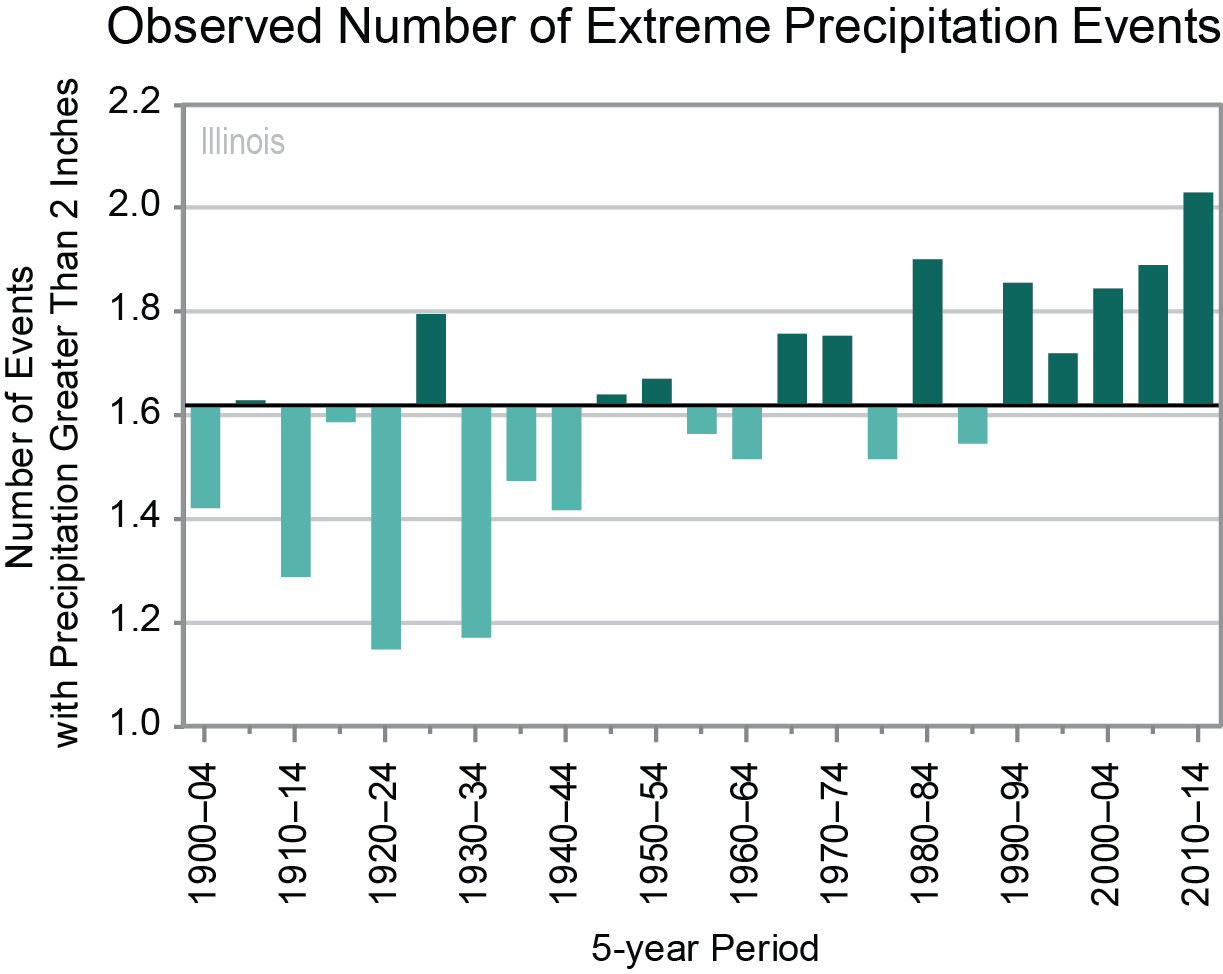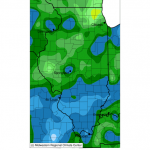As of April 25, the statewide average precipitation for Illinois is 2.8 inches, which is 94% of normal. However, we have several opportunities for widespread rains this week and into the weekend, according to the NWS precipitation forecast.
The first round of rain on Wednesday and Thursday has potential rainfall amounts of 1 to 2 inches across most of Illinois, along with the chance for severe weather. Continue reading “Widespread, heavy rains possible over next week in Illinois”
National Climate Assessment for Illinois
Earlier this year the National Climate Assessment for Illinois was released, tracking the historical changes in temperatures and precipitation in Illinois. You can find the full report for Illinois and other states at the State Climate Summaries website.
Here is Key Message #1
Average annual temperature has increased by about 1°F since the beginning of the 20th century. There has been seasonal variation in this warming, with average spring temperature increasing by about 2°F and average summer
temperature increasing very little. Under a higher emissions pathway, historically unprecedented warming is projected by the end of the 21st century.
Key Message #2
Precipitation in spring and summer has generally been above average over the past two decades, affecting agriculture in both positive (adequate soil moisture) and negative (delays in spring planting) ways. Precipitation in winter and spring is projected to increase, which poses a continuing risk of spring planting delays.
Key Message #3
Severe flooding and drought have occurred periodically in recent years. Future increases in extreme precipitation events and in evaporation rates may increase the intensity of both floods and droughts.
You may notice that two out of the three messages relate to increases in precipitation and especially heavy rainfall events. The graphic I found most compelling was this one for the increasing number of 2-inch rain events with time. The caption explains how this graph was created. The increased frequency in 2-inch rain events seen since the early 1980s lines up very well with my experience and research over the years in Illinois.

Continue reading “National Climate Assessment for Illinois”
Wet August in Illinois
As of yesterday, the statewide average rainfall was 4.47 inches. That is already 0.9 inches above normal for the month and the 27th wettest August on record (since 1895). The wettest August on record was 1977 with 6.86 inches. The latest NWS forecast is showing the potential for another inch of rain to fall in the next 7 days (last map). That would put us in the top ten wettest Augusts on record.
The highest rainfall total in the state for August is Waltonville (Jefferson County, in southern Illinois) with 13.43 inches. A CoCoRaHS station just 3 miles away reported 12.94 inches (IL-JF-2).
Here are the rainfall totals through the morning of August 19 (left) and the departure from normal (right). The heaviest amounts have been in southern Illinois with 6 to 10 inches pretty common. Most of the state is well above normal on rainfall except for a spot in western Illinois and several counties in northeast Illinois. Click to enlarge.
Continue reading “Wet August in Illinois”
5-Day Rainfall in Illinois and Midwest
Here are the 5-day accumulated rainfall totals for Illinois and the Midwest. Rainfall was heaviest south of Interstate 70 where amounts of 4 to 8 inches were common (lighter shades of blue). The largest 5-day rainfall total was from a CoCoRaHS station at Waltonville (IL-JF-2) with 10.79 inches. CoCoRaHS is a national network of trained volunteer precipitation observers, learn more at cocorahs.org
Continue reading “5-Day Rainfall in Illinois and Midwest”



